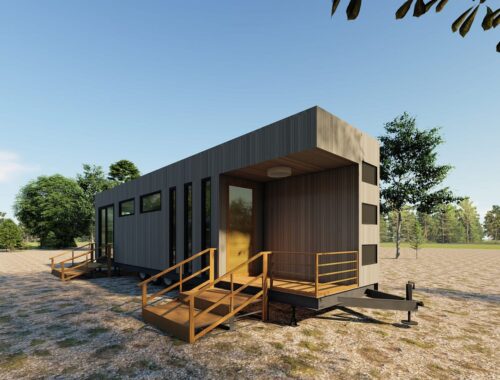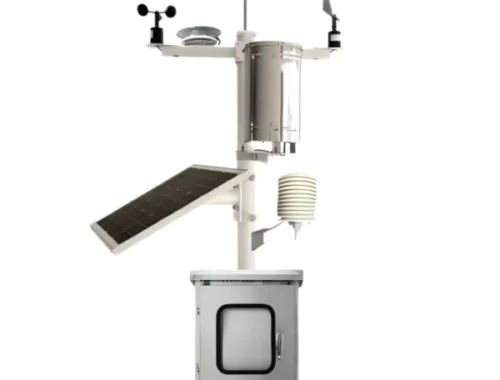Big Brother–Style Tech Is Helping Hikers Avoid Crowds
>
When you head out for a hike this summer in many areas in the mountains just east of Seattle, a government-sanctioned program will be watching your Flickr photos and Instagram posts, noting where you’ve been and what you’ve been up to. While this sounds like creepy Big Brother invading your privacy, the researchers aren’t actually interested in you personally.
Instead, they’re training the tools of Big Data on social media in hopes that the information they gather can improve your future visits to public lands.
The program in the Mount Baker-Snoqualmie National Forest is the first of its kind in the country. Mount Baker-Snoqualmie, which lies on the west side of Washington’s Cascade Range between the Canadian border and Mount Rainier, is one of the most popular national forests in the nation, with an estimated 2.2 million visits in 2015. That’s likely increasing, thanks largely to Seattle, the fastest-growing big city in the nation. More than 940,000 Seattle-area residents said they hiked in 2017, a number that has doubled over about a decade, according to the Seattle Times.
The result, on peak weekends, is a very busy frontcountry. It’s not uncommon to find 200 or more cars at popular trails along the Interstate 90 corridor just outside Seattle. “People are willing to park as much as two miles down the road from the trailhead,” says Mike Schlafmann, public services staff officer for the forest. “There’s high demand for what appears to be a very specific type of experience. One of our challenges is knowing where people are going and why they are going there.”
Managers already have some useful tools to estimate the use of public lands, such as the National Visitor Use Monitoring Program, which measures use on a broad, often forest-wide scale every five years. But that doesn’t tell managers precisely when hikers and snowshoers were in a particular spot or exactly where they went. In that context, consider maintenance: A forest might have 100 trails to maintain but limited dollars for trail work. “They want to spend that money where it’ll provide the best experience for users,” Schlafmann says. If managers can pinpoint the most-used trails, they can prioritize, say, which bridge to fix first.
And here is where the great outdoors meets tech.
Many people these days post pictures to social media of themselves enjoying public lands. Several years ago, researcher Spencer Wood, now a staff scientist at the University of Washington’s Center for Creative Conservation, wondered if all those posts could be used to estimate, cheaply and accurately, how many people visit an area. Wood’s initial study in 2013 found that, yes, it could be done.
A few years later, a graduate student named Carrie Sessions built upon this same idea when she looked at photographs taken in 38 national parks in the western United States and posted to Flickr—or, more precisely, her work examined the data attached to those photos, such as time stamps and geotags that reveal location information. (Sessions chose national parks because they often count visitors at entry gates, and that gave researchers a way to check the accuracy of their experiment.) Her work found a predictable relationship between the number of photos posted each month at a national park and the number of actual visitors. The information used was already publicly available, which made it both unobtrusive and relatively inexpensive. This data would later serve as Sessions’ master’s degree thesis at the University of Washington. It later became a study in 2016 co-authored by Wood.
In 2015, using social media posts, Wood used a similar approach and found that visitors to lakes in some Midwest states were willing to travel 56 minutes farther for every one-meter increase in water clarity in those lakes. Other researchers have found that pictures of wildflowers posted to Twitter from national parks can be used to accurately gauge flower phenology. This kind of information could reveal changes in bloom times caused by the warming climate. In essence, it’s crowdsourcing but without having to ask the crowd for for help.
Using social media in the outdoors in this way is still a pretty new idea, Wood acknowledged, and he and others are still grappling with how to do it best and most accurately. In other work, Wood and his colleagues found that analysis of Twitter posts provided better estimates of the popularity of urban parks in New York City and the Twin Cities than data from other social media platforms. “But the reverse is true on our local national forests,” he says.
In Washington, the Mount Baker-Snoqualmie National Forest started working with Wood and his colleagues in 2015. Since then, researchers have counted more than a quarter-million visitors and gathered data from tens of thousands of social media posts from 32 spots within the forest. By using that data and trip reports from the popular Washington Trails Association website, the scientists are creating visitor models that show how many people are using specific trails and when.
An early problem the team ran into was that, unlike at national parks, there are no entry gates at Mount Baker-Snoqualmie trailheads that keep an accurate count of visitors so researchers can check their work. Wood and his team got creative. They’ve counted people using everything from on-the-ground researchers with clipboards to electronic car counters laid across roads to “basically game cameras at trailheads,” Schlafmann says.
This summer, for a second time, in some areas they also deployed a rudimentary text-messaging chatbot. A sign at some trailheads prompts visitors to text how many cars they count. If a hiker replies, the program asks another question. If the hiker answers, the program asks another. The goal is to get as much info about the experience as visitors willingly provide. Similar work to count people, and their locations, using social media is now underway on public lands in New Mexico.
How will all of this make your outdoors experience better?
Imagine this in the not-distant future: You want to go for a day hike on a Saturday morning. You open an app on your phone. Before you even leave the house, your phone tells you—based on real-time estimates—whether your chosen trailhead is already jammed with cars. But the app isn’t done. Knowing the kind of hike you’re looking for, it then recommends similar destinations that it knows are much less crowded.
Choose one, then click. A button takes you to a Meetup group of people carpooling to the trailhead. Or, if you live in a major city, up pops info about when the next public bus leaves for your destination.
Making the outdoors easier and more pleasant to access is more important than ever—not only around Seattle but also on public lands outside cities like Denver and Salt Lake City, fast-growing metropolitan areas with nature nearby. In the end, by helping people escape the crowds and have more enjoyable recreational experiences, the technology might even get more people to ignore their phones for a while.
You May Also Like

Google Snake Game: A Classic Arcade Experience
March 23, 2025
シャーシ設計の最適化手法とその応用
March 20, 2025